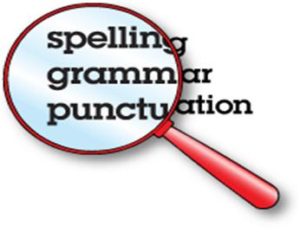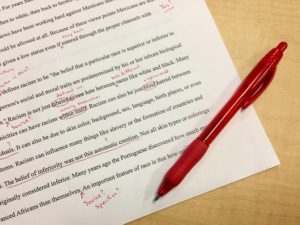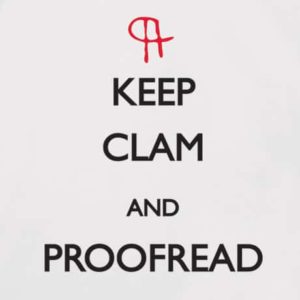Getting your writing ready for publication
GSQ’s Writing Group has recently been discussing the basics of compiling a printed publication. Depending on the nature of the publication, apart from the main body of the text other components may include a foreword, contents list or table, a preface, appendixes, frequently used abbreviations and maybe a glossary of terms, endnotes. Two essential elements are a list of references or bibliography and an index. Referencing or citation is something we often wish we had done when we were undertaking our research and often forget about but is critical in verifying the accuracy of our research. There are various formats for referencing the information and sources we include in our work, and the main issue is to decide on a system and be consistent in its use. See articles by Janice Cooper in Generation for discussion on this topic.
In June we turned our attention to editing and proofreading, assuming that we had already taken the time to review and revise the content. It is generally regarded that there are three levels of editing and proofreading a piece of writing. The first, structural editing, takes a macro look at the overall structure of the document to ensure that the content, structure, language and presentation achieve the intended purpose.

Once we’re satisfied that the overall structure is appropriate, it’s then time to get into the next level which is copy editing. At this level the focus is on accuracy and consistency in grammar, vocabulary, spelling and punctuation, style and layout. Developing a style sheet and having this by your side is extremely valuable as it enables you to make decisions that can be applied throughout your document. What format did you choose for dates and names, for example? Did you decide to indent the first line of your paragraphs? Which font and size did you choose? Is your text justified? These are all questions which you can address in your style sheet and apply consistently throughout the document, especially if you have incorporated text from another person, or individual chapters of your work have been written at different times. We rarely notice when text is consistent, but inconsistencies seem to jump off the page and can irritate a reader. Proofreading is the final essential stage and this is where you check through the document as a whole to ensure it is ready for publication.
One way of editing a document at a structural level is to use a highlighter to identify headings and important sentences to ensure that the pattern of the document is clear and the content flows seamlessly from one paragraph or section to the next. This makes it easier to see whether any of the content needs to be re-arranged and whether the document actually achieves what it set out to achieve. Identifying headings and important sentences also brings to light superfluous, repeated or inconsistent information. Ideas, arguments and assumptions need to be supported by evidence. Gaps can be highlighted and subjected to further research before the document is finalised.
Stylistically, each paragraph should preferably focus on one specific topic. Including links and transitions between paragraphs and sentences help readers to follow the flow of the text. Similarly, try and craft your sentences so they are clear and concise and can be understood on first reading. If your sentences spread over 3 or 4 lines, it may be worth trying to split them up. Another suggestion is to use a variety of sentence structures to make the story a more interesting read. It is relatively easy in a family history to fall into a repetitive, and often passive, style. Bring your ancestors to life and make them active, rather than passive participants. In family histories, especially, our ancestors’ stories can be enhanced by including illustrations, photos, pedigree charts and family group sheets.

Proofreading is often easier if you work with a printed document rather than working on a screen. Adding comments and highlighting things in different colours is possible in both modes, but you may be less tempted to start revising your text if you’re working on a printed document. Some tips for working on screen include using double or triple line spacing and setting wide margins to reduce the number of words per line. You can also use a pointer such as a pen or pencil to separate out each word or punctuation mark. Reading out aloud, to someone else, or in reverse, also help to prevent the brain from seeing what it expects to see rather than what is actually there.
At the proofreading stage, double-check anything where you’re not sure, such as spelling, punctuation, even that the correct word has been used. Relying on online spellcheckers can be fraught with problems as they are unlikely to detect correctly spelt words used incorrectly. A dictionary, a thesaurus and a grammar book are essential resources on the family historian’s bookshelf – Australian editions are most helpful. A writing guide, such as The Professional Writing Guide: Writing well and knowing why, by Roslyn Petelin and Marsha Durham (Business and Professional Publishing 2003), from which most of these strategies have been drawn, can be a valuable resource for those who are not as confident in their writing, grammar and punctuation, or just want to check that they are on the right track. Another valuable resource is the Australian Government Style Manual for authors, editors and printers, (6th edition, John Wiley & Sons, 2008).
When you’re in the final stages of preparing your work for publication it is easy to start off doing one type of editing and then wander off into revising and re-writing. To reduce the likelihood of this happening, focus on one type of editing at a time. If you’re copy-editing for example, and realise that one section would fit better elsewhere, then highlight this and come back to it when you’ve worked your way through the whole document.


Family history research can consume many hours and years and if this is to be written up in a family history, then it is worth taking the time to ensure that the final publication is the best that it can be. Reviewing, editing and proofreading may seem tedious and time-consuming, but in the overall scheme of things they form a minor part. It’s worth remembering that we all make mistakes – we usually find at least one when the material is published. A good mantra could be “keep clam and proofread!”
This is my final blog post for GSQ. As one of the foundation bloggers since the blog was established in 2014, it’s time for me to move on. Thank you to everyone who has read and responded to my various posts – I’ve really enjoyed this opportunity to talk about many and varied things.
Pauline

Thanks so much for a very detailed and well set out blog, Pauline. I have learnt many of the above points in our Writing Group Meetings, but it’s great to have them all here in one spot. As I’m currently on about the 6th edit of my first book, I intend copy and pasting the above so I can keep it in front of me.
I wish I had known all of the above prior to beginning this project many years ago, however it will stand me in good stead for the next one.
In closing I would like to say a huge ‘Well done’ for all your blogs over the years, I’ve enjoyed reading them and know you will leave a huge hole in the GSQ Bloggers team.
Many thanks Bobbie. I really appreciate all the input and feedback from Writing Group members such as yourself – that’s why that group is so special. Best wishes. Pauline